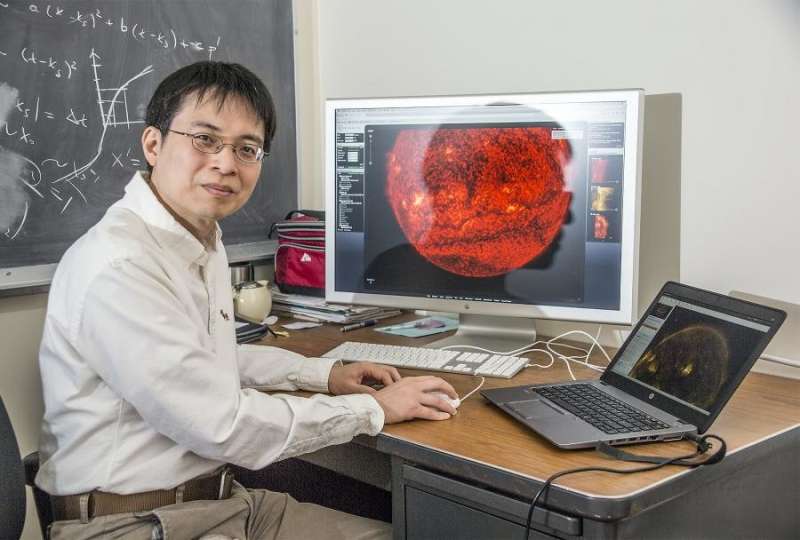Plasma bubbles help trigger massive magnetic events in outer space

Scientists at the U.S. Department of Energy's (DOE) Princeton Plasma Physics Laboratory (PPPL) have discovered key conditions that give rise to fast magnetic reconnection, the process that triggers solar flares, auroras, and geomagnetic storms that can disrupt signal transmissions and other electrical activities, including cell phone service. The process occurs when the magnetic field lines in plasma, the hot, charged state of matter composed of free electrons and atomic nuclei, break apart and violently reconnect, releasing vast amounts of energy. This happens in thin sheets of plasma, called current sheets, in which electric current is strongly concentrated.
By incorporating computer simulations, the findings add to an earlier theory of fast reconnection developed mathematically by physicists at PPPL and Princeton University. The new results incorporate a predictive model that gives a more complete description of the physics involved.
The impact of reconnection can be felt throughout the universe. The process may cause enormous bursts of gamma-ray radiation thought to be associated with supernova explosions and the formation of ultra-dense neutron stars and black holes. "A gamma-ray burst in our Milky Way galaxy, if pointing towards Earth, could potentially cause a mass extinction event," said PPPL physicist Yi-Min Huang, lead author of a paper reporting the findings in Astrophysical Journal. "Clearly, it is important to know when, how, and why magnetic reconnection takes place."
Scientists have observed that reconnection happens suddenly, after a long period of quiescent behavior by magnetic fields inside current sheets. What exactly causes the magnetic fields to separate and reconnect, and why does the reconnection take place more quickly than theory says it should?
Using computer simulations and theoretical analysis, the physicists demonstrated that a phenomenon called the "plasmoid instability" creates bubbles within plasma that can lead to reconnection when certain conditions are met:
- The plasma must have a high Lundquist number, which characterizes how well it conducts electricity.
- Random fluctuations in the magnetic field of the plasma provide "seeds" from which the plasma instability grows.
Taken together, these conditions allow plasmoid instabilities to give rise to reconnection in current sheets. "Our study suggests that disruption of the current sheet caused by the plasmoid instability may provide a trigger," Huang said.
The trigger breaks up two-dimensional sheets of electric current within plasma into bubbles, or plasmoids, and many smaller sheets. The growing number of sheets creates more opportunity for magnetic lines to break apart and join together. Reconnection also occurs in more than one place, causing the aggregate rate for an entire system to increase.
The smaller size of current sheets speeds up reconnection as well. Electromagnetic forces tend to propel the plasma between sheets, producing motion that accelerates when the sheets break into smaller ones. The accelerating plasma brings magnetic lines together more quickly and leads to faster reconnection rates.
Huang and fellow physicists would like to test their new model using experimental machines with additional capability. While no such machine exists at present, researchers look forward to a new unit that is coming online.
More information: Yi-Min Huang et al. Plasmoid Instability in Evolving Current Sheets and Onset of Fast Reconnection, The Astrophysical Journal (2017). DOI: 10.3847/1538-4357/aa906d
Journal information: Astrophysical Journal
Provided by US Department of Energy





















